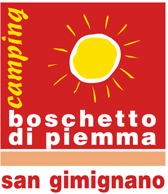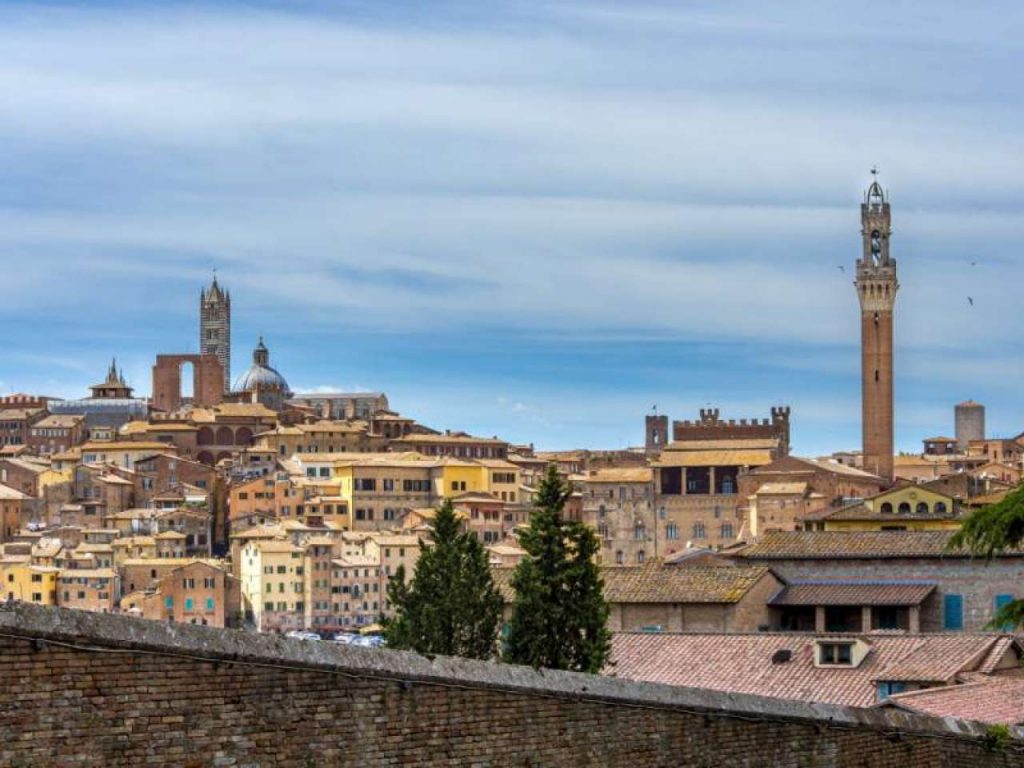San Gimignano San Gimignano is a faboulos town, in the province of Siena, characteristic for the vernaccia and its towers, rises on a hill in the domain of Val d’Elsa with a population of 7700 inhabitants. He had great development during the middle ages thanks to the via Francigena that ran through. San Gimignano is certainly a village worthy of a not short visit. The Centre is a real jewel of art that preserves intact the charm of a bygone era. Beautiful is la Collegiata di s. Maria Assunta built in the 12th century. Inside there are frescoes of the 14th senese which depict the stories of the old testament by Barna da Siena, Bartolo di Fredi and Taddeo di Bartolo and frescoes from the 15th century Florentine. The chapel was designed by Giuliano and Benedetto da Maiano with terracotta decorations.
The Church of s. Agostino is with frescoes by Benozzo Gozzoli and there is also the Coronation del Pollaiolo. Worthy of a visit are the churches of s.Pietro, s. Jacopo and s. Bartolo.
Also the Palazzo del Podestà that preserves a fresco of Sodoma.
A glince of beauty is Piazza della Cisterna, and its beautiful.The village also houses several museums: the Etruscan, that of sacred art and the Pinacoteca civica.
Economic growth, architectural and cultural centre of San Gimignano terminates at half of the 14th century, when the town becomes subject of Florence.
From anywhere you come, San Gimignano rises on the Hill, high 334 meters, with its numerous towers.
Even today there are thirteen. It is said that in the 14th century there were seventy-two, equal to the nuclei of well-off families, the only ones who could show, through the construction of a tower, its economic power. More recently, the city has been able to protect his works so that it was declared by UNESCO World Heritage.
The walk through Siena begins in the heart of the city from the famous shell-shaped square: piazza del Campo. A frame very scenic thanks also to the sloping floor made of red bricks arranged herringbone, alternating with streaks of grey stone. The glance is impressive if you turn your eyes towards the magnificent Palazzo Pubblico, with a succession of three orders of arches on the front, from which stands the Torre del Mangia, 120 meters high. Around the piazza a Crown of palaces and the chapel of the square shaped as a loggia to the left of the Palazzo Pubblico.
At the edge of the area paved, instead, you open the stunning Fonte Gaia, by Jacopo della Quercia. To admire the magnificent masterpieces kept in the Museo Civico, you get on the first floor of the Palazzo Pubblico, after going through the narrow courtyard of the Podestà. The Museum has two halls:. Hall of the Globe, with the Maesrà of Simone Martini, and the Sala del Nove frescoed by Ambrogio Lorenzetti.
The visit ofFirenze starts from the city’s most representative symbol of glory and power of the Medici family: piazza della Signoria, scenario of clashes between Guelphs whites and blacks in the 13th century, the stake of Savonarola in the 15th century, and certainly an open-air museum because of the magnificent works which still today can be admired. The glance offers a postcard, among the most beloved in the world, with the magnificent Palazzo Vecchio, built in 1299 and so called after the Medici moved to Pitti Palace.
Inside deserve a visit the Salone del Cinquecento with frescoes of Vasari, the courtyard and its decorations and the imposing staircase leading to the Salon. In front of the Palace you can see the statue of David by Michelangelo, a copy of the original that is preserved in the Galleria dell’Accademia, and Hercules and Cacus di Baccio Bandinelli. On the right side of the Palace stands the elegant Loggia dei Lanzi, 1376, which bears the signature of Simone Talenti and Benci di Cione.

